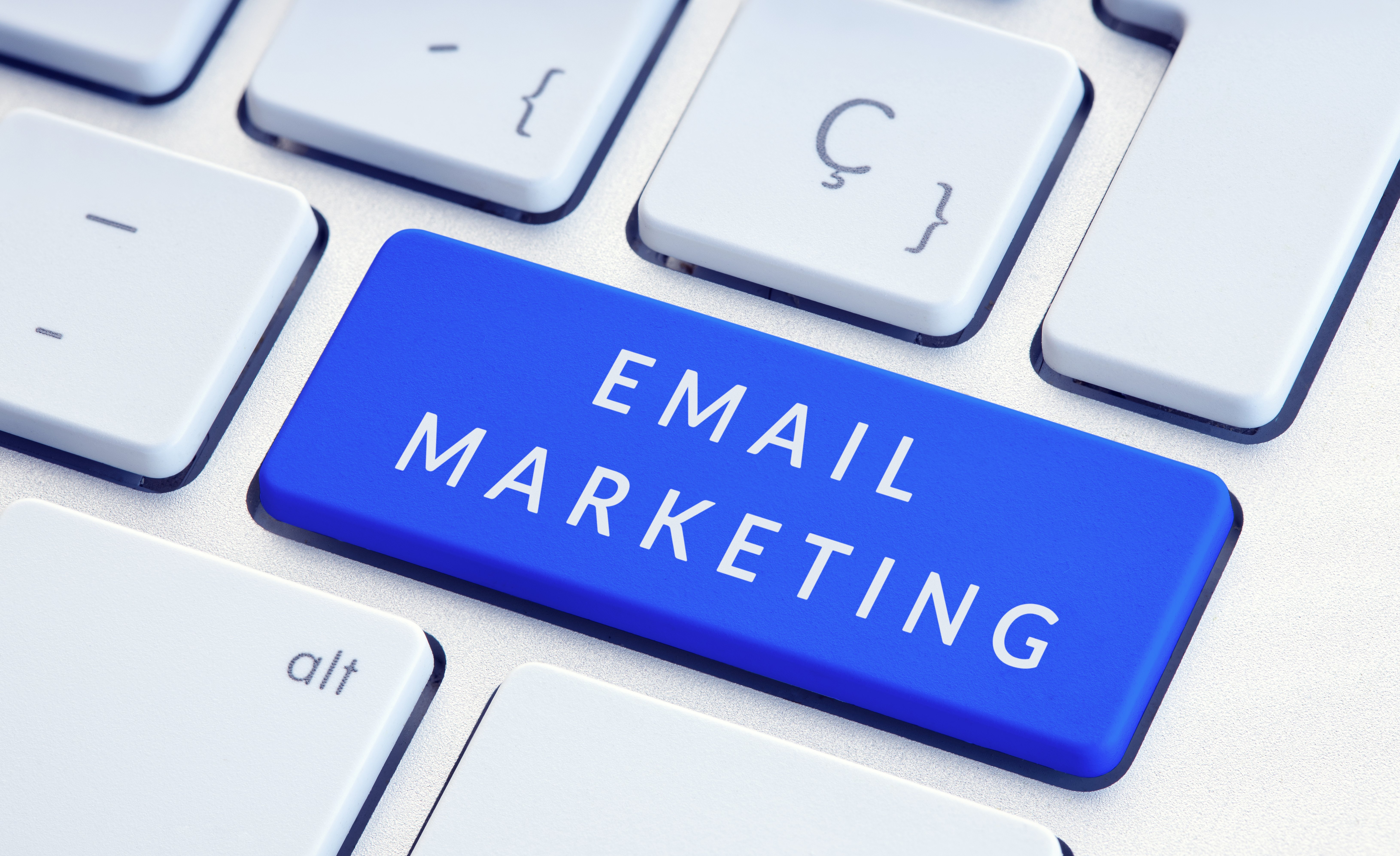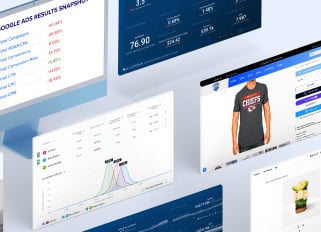
E-commerce Email Marketing 101: Everything You Need to Know
In today’s fast-paced digital world, email marketing remains a pivotal tool, especially for e-commerce businesses. Choosing the best email marketing tool can significantly enhance the effectiveness of ecommerce email marketing by providing ease of use, automation capabilities, and seamless integration with ecommerce platforms.
It’s more than just sending newsletters or promotional offers; it’s about creating meaningful connections with your customers. Understanding how to effectively wield this tool can significantly boost your sales and customer loyalty by effectively engaging existing customers.
In this comprehensive guide, we’ll explore the essential elements of e-commerce email marketing. We’ll discuss its importance, how to build a robust email list, craft compelling content, and leverage personalization and automation. Whether you’re an e-commerce entrepreneur, marketing professional, or small business owner, this post will equip you with the knowledge to enhance your email marketing efforts.
The Importance of Email Marketing for Your Ecommerce Store
Email marketing is often hailed as the backbone of digital marketing strategies. Promotional emails can drive sales and awareness of specific deals or offers. For e-commerce businesses, it offers a direct line to customers, providing opportunities for personalized communication that can yield high returns.
In fact, studies show that for every dollar spent on email marketing, the average return is $42. A well-planned ecommerce email marketing strategy can significantly enhance these returns by effectively engaging customers through personalized content and segmentation.
Not only does email marketing allow businesses to reach their audience directly, but it also helps in building brand awareness (maybe even better than social media- check out these email statistics).
Regular emails keep your brand at the forefront of customers’ minds, ensuring they think of you first when they’re ready to make a purchase. Furthermore, email marketing helps nurture leads and convert them into loyal customers by delivering targeted content that resonates with their preferences.
Additionally, email marketing provides valuable insights into customer behavior. Through analytics, businesses can track open rates, click-through rates, and conversions. These metrics offer a deeper understanding of what content engages your audience, enabling you to refine your strategy for better results.
Building Your Email List: Strategies for E-commerce
Building a quality email list is crucial for the success of your email marketing campaigns. However, it’s not just about quantity; quality matters too. Start by offering value in exchange for email sign-ups. This could be exclusive discounts, early access to sales, or informative content like e-books related to your industry.
Another effective strategy is to use pop-ups on your website. While pop-ups sometimes get a bad rap, when done right, they can significantly boost sign-ups. Ensure your pop-up is visually appealing and offers a clear incentive for users to subscribe. Timing is crucial; consider triggering the pop-up when a user shows intent to leave your site.
Social media platforms are also a great avenue for growing your email list. Promote your newsletter subscription through engaging posts, stories, and ads. Collaborating with influencers in your niche can expand your reach and attract potential subscribers who are already interested in similar products or services.
Crafting Compelling Email Content for Different Stages of the Customer Journey
Creating engaging email content is crucial to maintaining customer engagement and driving conversions. It’s essential to tailor your content to the different stages of the customer journey—awareness, consideration, and decision.
During the awareness stage, focus on educational content that introduces your brand and what sets it apart. For instance, you might share articles, infographics, or videos that highlight industry trends and how your products address specific needs. This builds trust and positions your brand as a thought leader.
In the consideration stage, your emails should provide deeper insights into your products or services. Include detailed product descriptions, customer testimonials, and comparisons that help potential buyers evaluate their options. Offering limited-time discounts or free trials can also sway undecided customers in your favor.
Lastly, during the decision stage, reinforce the benefits of choosing your brand. Send personalized offers or reminders about items left in the shopping cart. Highlighting your excellent customer service and easy return policy can alleviate any lingering doubts and encourage conversion. Personalized offers and reminders can also encourage repeat customers to make subsequent purchases.
The Role of Personalized Email Campaigns in E-commerce Email Marketing
Personalization is no longer just a nice-to-have feature; it’s a must. In fact, 80% of consumers say they are more likely to do business with a company that offers a personalized experience. Personalized emails can range from simple elements like addressing the recipient by name to more complex techniques like recommending products based on past purchases.
Personalized email campaigns can significantly improve engagement and conversion rates. By utilizing customer data and actions, such as cart abandonment or product recommendations, and employing features like segmentation, you can efficiently target specific customer groups.
 Segmentation is key to effective personalization. By dividing your audience into specific groups based on demographics, purchase history, or browsing behavior, you can deliver relevant content that speaks directly to their interests. This approach not only improves engagement but also increases the likelihood of conversion.
Segmentation is key to effective personalization. By dividing your audience into specific groups based on demographics, purchase history, or browsing behavior, you can deliver relevant content that speaks directly to their interests. This approach not only improves engagement but also increases the likelihood of conversion.
Dynamic content is another powerful personalization tool. This allows you to change elements of your email, such as images or calls to action, based on the recipient’s preferences. By creating a more tailored experience, you enhance the value of your communications and strengthen customer loyalty.
Automation and Segmentation: Making Your Campaigns More Effective
Automation streamlines your ecommerce email marketing efforts, ensuring consistency and efficiency. It allows you to set up automated workflows that trigger emails based on specific actions or time intervals. Common examples include welcome series for new subscribers, abandoned cart reminders, and post-purchase follow-ups.
Segmentation and automation go hand-in-hand. By segmenting your audience, you can create targeted campaigns that cater to specific groups. Automation then ensures these emails are delivered at the optimal time without manual intervention. For instance, you could set up a sequence that sends reminders to customers who haven’t purchased in a while, re-engaging them with special offers.
The ability to automate mundane tasks also frees up time for your team to focus on strategic planning and creative development. With the right tools, you can continuously analyze campaign performance and make data-driven adjustments for ongoing improvement.
Measuring Success: Key Metrics for E-commerce Email Marketing
To ensure your email marketing efforts are paying off, it’s important to track key performance metrics, including monitoring customer purchases. Open rates indicate how effective your subject lines are in capturing attention. If open rates are low, consider testing different approaches to see what resonates with your audience.
Click-through rates (CTR) measure how engaging your email content is. A high CTR suggests your emails are compelling and relevant. If CTRs are lacking, evaluate your call-to-action and ensure your content aligns with your subscribers’ interests.
Conversion rates are perhaps the most critical metric, as they directly impact your bottom line. Monitor how many of your email recipients complete a desired action, such as making a purchase or signing up for an event. Use A/B testing to experiment with different elements and optimize for conversions.
Industry Best Practices and Innovations in E-commerce Email Marketing
To stay ahead in the competitive ecommerce business landscape, it’s vital to adopt industry best practices and explore innovative techniques. One such practice is mobile optimization. With more people checking emails on their phones, ensuring your emails are mobile-friendly is crucial for engagement.
Interactive emails are gaining popularity, offering a more dynamic experience within the inbox. Elements like clickable images, carousels, and embedded videos can make your emails more engaging and memorable. Just ensure these features are compatible with various email clients.
Staying updated with technological advancements is also essential. AI and machine learning are revolutionizing email marketing, enabling more precise targeting and predictive analytics. By leveraging these tools, you can create highly effective campaigns that deliver personalized experiences at scale.
 Bluetuskr: Your Email Marketing Sidekick
Bluetuskr: Your Email Marketing Sidekick
At Bluetuskr, we understand that successful email marketing for an online store requires a balance of creativity and strategy. Our approach focuses on data-driven decision-making, ensuring each campaign is backed by insights that drive results. We emphasize storytelling, helping brands connect with their audience on a deeper level.
Our expert team continuously monitors industry trends, ensuring our clients benefit from the latest innovations. From advanced segmentation techniques to AI-powered personalization, we tailor strategies that align with your business goals.
But what truly sets Bluetuskr apart is our commitment to collaboration. We work closely with our clients to understand their unique challenges and opportunities, crafting email marketing solutions that deliver tangible results.
FAQs
What is personalization in e-commerce email marketing?
Personalization refers to the practice of tailoring email content and design to individual subscribers based on their interests, behaviors, or demographics. This approach increases engagement and conversions by delivering relevant and meaningful communications.
How can segmentation improve personalization in email marketing?
Segmentation involves dividing your audience into specific groups based on common characteristics. This enables you to deliver more targeted and personalized emails that speak directly to each group's interests, increasing the effectiveness of your campaigns.
Can automation make my email marketing efforts more efficient?
Yes, automation streamlines tasks such as sending automated welcome series, abandoned cart reminders, and post-purchase follow-ups. This saves time and resources, allowing your team to focus on strategic planning and creative development.
What are some key metrics to track in e-commerce email marketing?
Open rates, click-through rates, and conversion rates are important metrics for measuring the success of your email campaigns. These metrics indicate how engaging your emails are and how many recipients are taking desired actions.
How can I stay ahead in e-commerce email marketing?
Staying updated with industry best practices and innovations is crucial in staying ahead in e-commerce email marketing. Mobile optimization, interactive emails, and leveraging AI and machine learning are just a few ways to ensure your campaigns remain effective. Partnering with an expert agency like Bluetuskr can also give you a competitive edge.
Conclusion
E-commerce email marketing is a powerful tool for businesses to reach and engage with their audience, encourage customers to take desired actions, drive conversions, and boost overall revenue. By understanding key metrics, adopting best practices, and utilizing innovative techniques, brands can create successful campaigns that deliver measurable results.
With years of experience as an e-commerce marketing agency, our team at Bluetuskr is passionate about helping businesses achieve their email marketing goals.
Contact us today to see how we can elevate your e-commerce email marketing efforts.
Connect With Us
Recent Post

.png)





Tell us what you think!